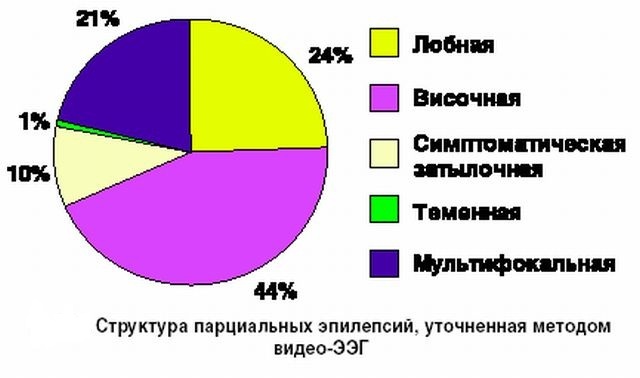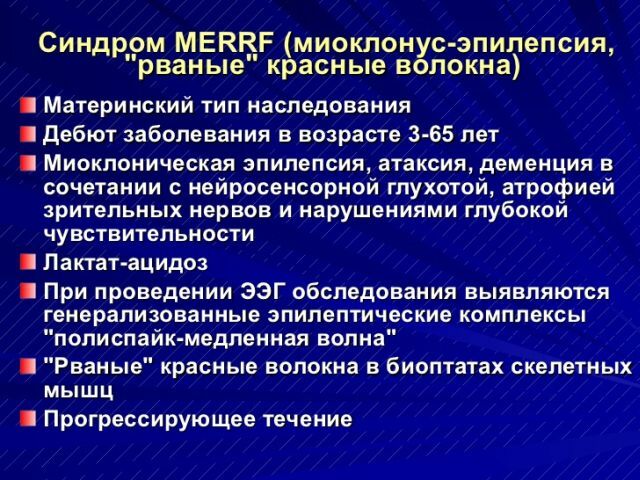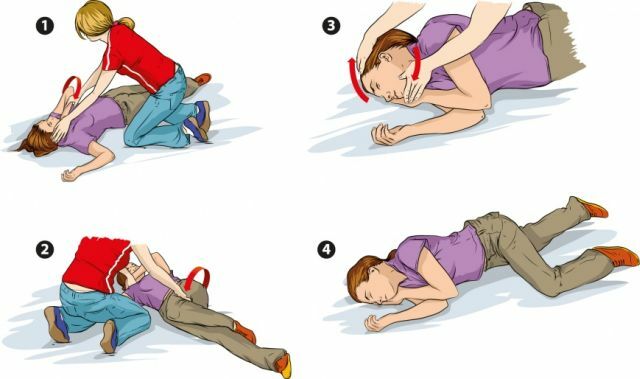 Previously, the causes of epilepsy were explained by the intervention of the Gods;it was called "Hercules" or "divine" disease. There was also an opinion that the disease appeared among the magicians who had made the wrong preparations for the ritual of summoning the spirits.
Previously, the causes of epilepsy were explained by the intervention of the Gods;it was called "Hercules" or "divine" disease. There was also an opinion that the disease appeared among the magicians who had made the wrong preparations for the ritual of summoning the spirits.
Hippocrates was inclined that the problem arose from the sun, winds and cold, which change the consistency of the brain.
Now this violation is thoroughly studied, which allows you to define it.
Epilepsy is the chronic neurologic disease , which manifests itself primarily in the form of sudden convulsive seizures. This disease is found not only in humans, but also in cats, dogs, mice and some other animals.
The word "neurological" is not without reason, since many people believe that this disease is caused by problems with the psyche. However, this is just a delusion.
The diagnosis of "epilepsy" is made after the transfer of 2 or more epileptic seizures.
Statistically, about 40-50 million people suffer epilepsy ( 5-10% of the total population).Of these, 78% live in developing countries.
Approximately 65-70% of all patients are amenable to cure. In 20% of all cases, timely medical intervention can significantly reduce the number of seizures. However, ¾ of those suffering from epilepsy do not receive proper treatment.
The risk of hereditary transmission of epilepsy is 3-4%.
75% of patients with epilepsy are younger than 20 years.
Consider such a disease as epilepsy in more detail - its causes and symptoms, modern diagnostics and treatment of pathology.
Contents
- How the epileptic seizure occurs
- Types of the disease
- Classification of the disease according to its causes
- Classification according to the factor triggering the disease
- Classification, depending on clinical and syndromic features
- Types of paroxysms
- Dependence on the incidence and rhythm of seizures
- Depending on the time of occurrence of
- Depending on the location of the epilepsy focus
- Who is at risk? Aries disease
- symptoms and signs of disease
- types of epileptic seizures
- Aura
- generalized seizures
- tonic-clonic seizures
- Absences
- myoclonic epilepsy
- Partial( focal, focal) seizures
- rolandic attacks
- Status epilepticus
- Psevdopristup
- For more information on children's attacks
- Diagnostic techniques
- First aid for seizure
- Treatment of
- disease Epilepsy prophylaxis
- Possible complications
- Video: Attack of epilepsy with Vesta
syndrome. How does the seizure occur
? The seizure mechanism is determined by the functional interaction of two brain parameters: of the convulsive focus( zone of structural 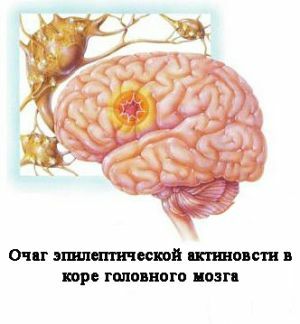 damage to the GM, in the place of which irritation of the motor nerve cells or convulsive puffiness may occur) and convulsive readiness( the probability of excitation in the cerebral cortex is higher than the level of the ability of the GM anticonvulsant system).
damage to the GM, in the place of which irritation of the motor nerve cells or convulsive puffiness may occur) and convulsive readiness( the probability of excitation in the cerebral cortex is higher than the level of the ability of the GM anticonvulsant system).
In the first case, irritation of the problem area leads to convulsive contractions of the muscles of the skeleton. Excitation of the brain area can spread throughout the GM cortex, which leads to loss of consciousness.
In the second case, the frequency and strength of seizures is determined by the anatomical features of the structure of KMG( the higher the convulsive readiness, the easier it provokes an attack).
Types of the disease
There are several types of epilepsy.
Classification of the disease according to its causes
Unfortunately, at the moment it is impossible to identify the causes of epilepsy in each diagnosed case. In 6 out of 10 epileptics, doctors detect an idiopathic form, that is, epilepsy without apparent anatomical causes for the onset, but presumably its presence is due to a genetic predisposition.
Epilepsy, which has emerged against a background of certain factors, is called symptomatic ( or secondary):
- structural brain defects: cyst, hemorrhage, swelling, malformations in the brain, abnormalities in the structure of the GM( eg, with certain genetic syndromes), thrombus orrupture of the vessel causing a stroke;
- infectious diseases: encephalitis, meningitis, neurocysticercosis and others;
- mechanical head injury;
- sudden withdrawal of sedatives or hypnotics;
- abrupt discontinuation of alcohol use;
- has a negative effect on the brain in the womb or during labor( hypoxia, birth injury, underweight at birth).
There is also a cryptogenic( or "genuine") epilepsy, when there are no genetic or anatomical reasons for the onset of the disease.
Categories of "idiopathic" and "cryptogenic" epilepsy intersect, since hereditary epilepsy, like cryptogenic epilepsy, is not displayed in any way during the study of the patient's brain.
 How correctly to use tablets from a migraine Eksedrin - what it is necessary to know and remember?
How correctly to use tablets from a migraine Eksedrin - what it is necessary to know and remember? Treatment of alcoholic epilepsy is a difficult and long process. This disease is easier to prevent than cure.
Classification according to the factor provoking the disease
Allocate:
- primary( occurs due to increased convulsive readiness of the brain, congenital or early acquired type);
- secondary, or focal( occurs as a result of damage to the GM - mechanical or infectious);
- is reflex( it appears because of an external stimulus, each patient can have its own: bright or flickering light, noise, smell. ..).
Classification, depending on clinical and syndromic features of
There are such types:
- epilepsy with propulsive, minor seizures( characteristic of infantile age);
- with myoclonic seizures( early childhood form);
- with impulsive seizures( most often during puberty);
- with psychomotor seizures( adversive, sensory, auditory, oral seizures, fits of laughter, which can be combined with convulsions, and can proceed independently).
Types of paroxysms
There are two types of :
- accompanied by convulsive paroxysms( seizures);
- with non-convulsive paroxysms.
Dependence on the frequency and rhythm of seizures
Allocate:
- epilepsy with rare / frequent seizures( frequent - several times a week, rare - less than once a month);
- epilepsy with increasing and irregular arrhythmias.

signs of generalized epilepsy
Depending on the time of onset of
The main types of are three:
- awakening epilepsy;
- epilepsy at night;
- generalized( can occur at any time).
Depending on the location of the epilepsy focus
Localization:
- temporal;
- cortical;
- occipital;
- diencephalic, etc.
Separately, epileptic reactions are isolated as a form of epilepsy.
When eliminating the cause of the epileptic reaction, the problem completely disappears.
Who is at risk of
? At risk group are:
- People whose brains are affected by infections, vascular diseases( for more details, see the description of symptomatic epilepsy).
- With anomalies of brain development.
- Whom family members( s) suffer from this disease.
- Whose activities are associated with possible head injuries( various types of fighting, construction).
- More than 60 years old( due to weakened immunity, increased risk of problems with the vessels of the GM).
- Children under 12 years of age( increased probability of injuries, active period of infectious diseases - chickenpox, measles - which can adversely affect the work of the GM).
Symptoms and signs of the disease
Specific signs and symptoms of epilepsy and its consequences - epileptic seizures of depend on the affected area of the brain ( focal or generalized epilepsy) and how far it has spread.
In addition to "common" seizures, there may be temporary symptoms: disorientation, loss of consciousness, movement disorders, visual and visual disturbances, sudden mood changes, aggressiveness, numbness of the body area - characteristic of focal lesions.
Generalized epilepsy manifests itself in spasmodic seizures throughout the body, short-term stopping of breathing, twitching, biting of the tongue, screaming, incontinence. It can flow without cramps( eyelid tremor, light head-drop, impossibility to look away from one point).
Also, people suffering from epilepsy are more likely to suffer from fractures, their skin is more prone to damage.
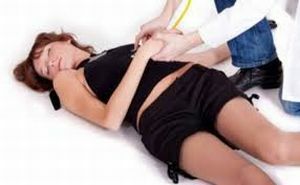 Their immunity is less resistant to other diseases, they can often suffer from psychoemotional disorders( depression, anxiety), the range of interests can narrow, the character become more picky and petty, easily pass from a calm state to aggression.
Their immunity is less resistant to other diseases, they can often suffer from psychoemotional disorders( depression, anxiety), the range of interests can narrow, the character become more picky and petty, easily pass from a calm state to aggression.
Rageful, vindictive ( classified as "epileptic character").
But not always signs of epilepsy in adults or children can be seen by others or identified as epileptic.
Types of epileptic seizures
Epileptic seizures can manifest themselves multifaceted - from general seizures to a barely noticeable several-second unconsciousness.
Sometimes there are visual hallucinations( feeling of change in the shape of objects), eye twitches, abdominal discomfort, tingling in the finger, trance state, short-term deprivation of speech and the like.
There are more than 30 types of epileptic seizures.
The international classification of epileptic seizures isolates generalized ( extends to all sections of the GM) and partial ( focal, focal) seizures.
They are divided into subspecies : absences, tonic-clonic seizures, complex and simple partial seizures, etc.
Aura
Usually has the following signs of : elevated body temperature, anxiety, restlessness, audible, taste, visual hallucinations, abdominal discomfort, deja vu without reason or unrecognizability of the previously seen, dizziness.
Generalized seizures
This is an epilepsy in which the attack covers both hemispheres of the GM.
Generalized include tonic-clonic seizures, absence.
Similar seizures are diagnosed in 40% of patients with epilepsy.
Tonic-clonic seizures
They are accompanied by with by unconsciousness, torso, legs, arms( tonic convulsions), twitching of the body and limbs( clonic convulsions).
Sometimes it is possible to hold the breath for a short while, but the choking does not occur. The attack lasts 1-5 minutes usually. After a fit, the patient can sleep for a while, feel some deafness, lethargy, less often - a headache.
If there was a focal seizure or aura in front of the tonic-clonic, then the symptomatology is defined as a partial attack with secondary generalization.
Absenses
These are short-term outages of consciousness( 1-30 seconds), are not accompanied by cramps.

first signs of epilepsy in children - absence
Absenses can occur quite often - up to 100-300 attacks per day.
But they are rarely noticed by others, writing off on a pensive state.
Aura does not occur before this type of attack.
During the seizure of , the movement of the epileptic abruptly stops, the look fades( becomes lifeless and empty), there is no reaction to the outside world.
Sometimes there are eye rolls, a change in skin color on the face.
After this kind of "pause", a person continues to move, as if nothing had happened.
The first signs of epilepsy in children are most often just absences. Can develop into more complex forms of seizure over time.
Myoclonic epilepsy
The most typical for adolescence( a great chance of occurring during puberty and up to 20 years).
is characterized by very sharp and rapid twitching of the hands, sometimes accompanied by tonic or tonic-clonic seizure. The patient, as a rule, remains conscious.
Often this type of seizure occurs several hours after waking up or up to 1-2 hours before sleep.
Additionally, there is an increased sensitivity to light.
Myoclonic epilepsy is relatively easy to treat.
Partial( focal, focal) seizures
Occur as a result of paroxysmal electrical activity in a separate section of the GM.There are 60% of patients with epilepsy. There are simple and complex partial seizures:
- During the of simple attacks of , the person retains consciousness. Are manifested by twitching or discomfort in certain parts of the body. Often simple partial seizures are like an aura.
- Complicated attacks of are characterized by impaired consciousness and pronounced motor disorders.
For the treatment of partial seizures, neurological examination of the problem area of the brain is performed to exclude possible concomitant diseases.
Rolandic attacks
Signs of Rolandic epilepsy occur in children 6-12 years of age. Partial symptoms of ( swallowing, twitching of the mouth corner, drooling).Usually occur during sleep.
Good to treat.
Epileptic status of
In case of epileptic status, urgent delivery to the intensive care unit is necessary.
Pseudo-step
This condition is consciously or unconsciously caused by the person himself, outwardly very similar to a real attack. Often, a pseudo-attack occurs in tense situations or with a lack of attention.
Basically, the attack simulates the children's or female body , with hysteria, conflicts, certain mental abnormalities.
After a pseudo-seizure, a person very quickly returns to normal. Very rarely there will be any damage to the body or further negative psychological manifestations. With the help of EEG it is possible to detect a pseudo-attack.
This seizure is extremely important to diagnose in a timely manner so that the "patient" does not begin drug treatment without real necessity.
In addition to children's bouts
Child epilepsy is very different from the course of the disease in adults.
Signs of epilepsy in infants such - marked tonic attacks ( due to the predominant functioning of the stem parts of the brain).Very often, and  x is confused with the usual motor activity of the child.
x is confused with the usual motor activity of the child.
Children's spasm ( 2-5 years) is manifested involuntary reduction of hands to the chest, torso or head tilt forward, straightening the legs. Most often, an attack can happen in the morning after waking up;lasts a few seconds.
Sometimes spasm is localized in a small area of the muscles( expressed, for example, by involuntary nodding of the head).By the age of 6, seizures can either stop, or develop into another type of epilepsy.
Clonic( atonic) attacks of occur at the age of 7-15 years.
In this case, the symptoms of epilepsy in children are characterized by sudden loss of consciousness( as a result of relaxation of all muscle groups).From the side it may look like a usual faint.
Other possible signs of epilepsy in children:
- nightmares, awakenings with tears and cries;
- sleepwalking;
- headaches( sharp, accompanied by vomiting and nausea);
- short-term inability to speak, answer questions.
Of course, the presence of the last symptoms does not necessarily mean epilepsy. However, if you have some suspicions - it is better to consult the doctor in addition, take a survey if necessary.
Diagnostic procedures
To detect the disease it is necessary:
- to be extremely attentive to your body and changes in the state( if it is a child, then be vigilant to the course of his psychomotor reactions);
- go to a doctor's consultation, describe in detail what's going on with you( which bothers how often);
- provide a family history;
- if necessary, performed electroencephalography, CT, MRI.
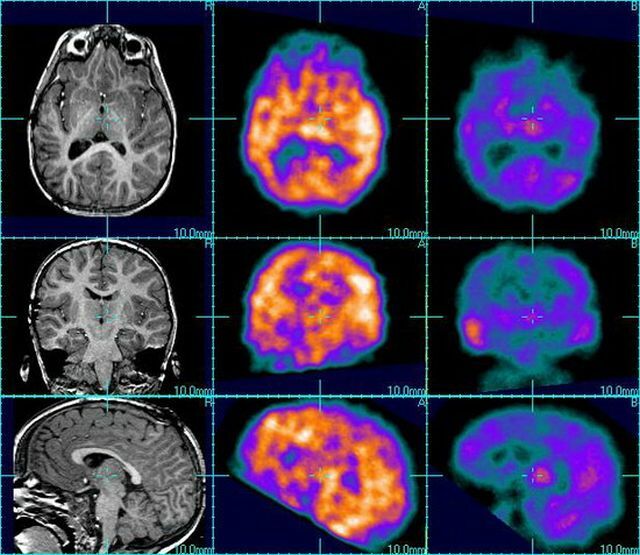
Diagnosis of epilepsy
First aid for a fit of
If an attack occurs that threatens a person's life, turn him over on his stomach, place a pillow under his head. If there is vomiting, turn it on its side( so that the masses do not get into the respiratory tract).
Insert between the teeth something hard( so that the tongue does not bite).Do not give him water, do not hold him in a certain position forcibly.
Be sure to call a doctor.
Read more how to provide first aid for an epileptic fit.
Treatment of
disease Treatment depends on the mechanism that triggers the disease. If the disease is caused by disturbances in the work of the GM, then eliminating the main problem will help to get rid of seizures.
If epilepsy is caused by anatomical or genetic causes, medications are prescribed that will help to minimize seizures or even eliminate them at all. Sometimes an operation can be prescribed.
Epilepsy prophylaxis
The causes of epilepsy in adults and children can be quite different.
Hereditary epilepsy is virtually impossible to prevent.
Symptomatic can be prevented by , avoiding craniocerebral injuries, infectious diseases.
Also should minimize the amount of alcohol, strong tea and coffee, overeating, temperature fluctuations( overheating or supercooling of the body).
Often stay in the open air, perform daily exercises, do not overwork, consume healthy food, eat enough dairy products.
Possible complications of
It is worth noting such:
- increased frequency of seizures, up to epileptic status;
- aspiration pneumonia( caused by inhalation of foreign objects, particles of food, vomit during the attack);
- sudden death( especially with a fit with extensive cramping, or seizure in water, extreme types of rest)
- trauma( when falling);
- attack in a pregnant woman threatens the development of vices in the fetus;
- negative emotional states, asociality.
Timely diagnosis of the disease is a step to recovery!
Video: Attack of epilepsy with Vesta
syndrome The child has epileptic seizures several times a day. The disease is complicated by Vest syndrome and cerebral palsy.

